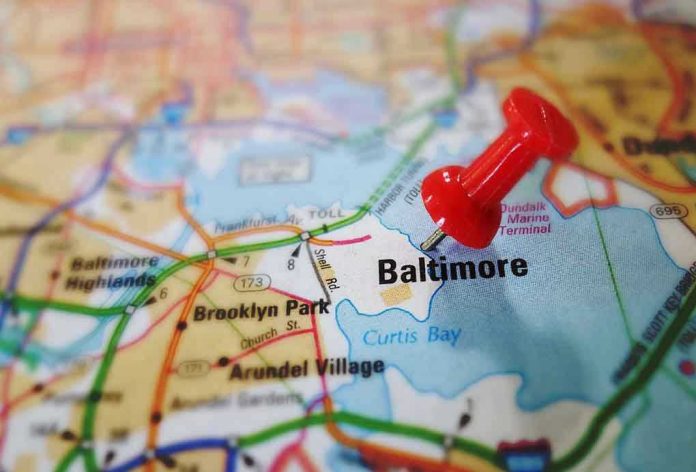
A single, overlooked wire caused a $5.2 billion disaster in Baltimore—proof that years of government neglect and weak infrastructure protections can cost lives and cripple a state’s economy in an instant.
Story Snapshot
- A lone loose wire on the Dali container ship triggered the catastrophic collapse of Baltimore’s Francis Scott Key Bridge in March 2024.
- The bridge’s lack of modern collision barriers exposed a glaring failure in infrastructure risk management and left six workers dead.
- Maryland faces a $5.2 billion replacement bill and years of economic disruption, while new safety measures are only now being considered.
- Policy failures at the state level and reliance on outdated standards set the stage for this avoidable tragedy.
Technical Negligence Exposes Systemic Vulnerabilities
The National Transportation Safety Board (NTSB) has confirmed that a single loose wire aboard the Dali container ship caused a catastrophic blackout, disabling both the vessel’s power and steering at the worst possible moment.
As the ship drifted uncontrollably toward the Francis Scott Key Bridge, the crew’s rapid response could not avert disaster. The bridge collapsed instantly, killing six construction workers and severing a vital transportation artery for the Baltimore region.
This event underscores how even minor technical failures, if unchecked, can have devastating consequences when combined with insufficient government oversight and lax maintenance protocols.
Immediate investigation revealed that the Key Bridge, a critical link for commuters and commerce, lacked the modern protective barriers now standard on major crossings. The absence of such collision countermeasures left the structure vulnerable to precisely the kind of incident that occurred.
Experts compared the situation to the Delaware Memorial Bridge, which had installed advanced protections and thus avoided similar calamities. Years of risk assessments by Maryland authorities failed to prioritize or implement these upgrades, reflecting a troubling disregard for public safety and infrastructure resilience.
Economic Fallout and Policy Failures
The fallout from the collapse extends far beyond engineering oversight. Maryland now faces a staggering $5.2 billion bill to replace the bridge, with projections that it could remain out of commission until at least late 2030. Local businesses, commuters, and entire communities are grappling with lost income, restricted mobility, and mounting frustration.
The tragedy has renewed scrutiny of state and federal infrastructure policy, highlighting a pattern of reactive measures and delayed modernization. Political leaders are under intense pressure to accelerate reconstruction and finally deliver on long-promised safety reforms, but for many taxpayers and affected families, these pledges come far too late.
While the technical cause was a “needle in a haystack,” as the NTSB described, the larger issue lies in systemic neglect and misallocation of resources—problems that have festered under bloated government budgets and misplaced priorities.
Conservative advocates point out that a focus on woke agendas, globalist spending, and bureaucratic expansion during previous administrations contributed to the lack of practical investment in critical infrastructure. This disaster serves as a wake-up call for restoring accountability and common sense to public works, putting American safety and interests first.
Rethinking Infrastructure and Public Accountability
In the wake of the NTSB’s findings, Maryland officials have vowed to implement new safety measures and reassess bridge protections statewide. However, for many, these assurances ring hollow without concrete action and transparent oversight.
The incident has fueled calls for a comprehensive review of infrastructure nationwide, demanding that policymakers finally address vulnerabilities before tragedy strikes. The maritime industry also faces tighter scrutiny, with likely mandates for stricter maintenance protocols and redundant safety systems to prevent single-point failures from spiraling into disaster.
For conservatives, the Key Bridge collapse is a stark reminder: real threats to American lives and livelihoods come not from imaginary crises, but from years of neglected maintenance, misplaced priorities, and a failure to uphold basic standards of safety and responsibility.
As the state moves to rebuild, many insist that only a renewed commitment to constitutional values, fiscal discipline, and practical governance can prevent such avoidable catastrophes in the future.
Sources:
NTSB: Loose wire led to Baltimore bridge collapse, sparking urgent calls for infrastructure reform

















